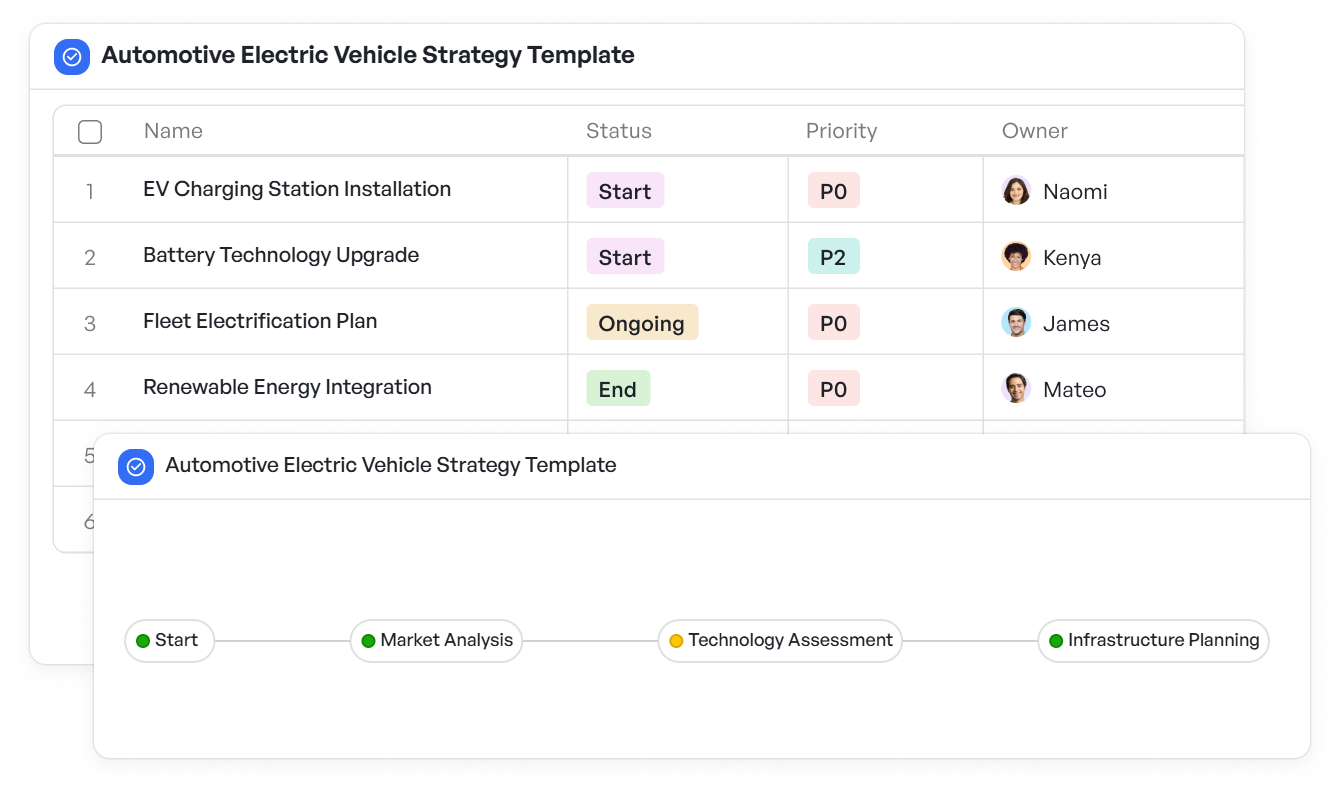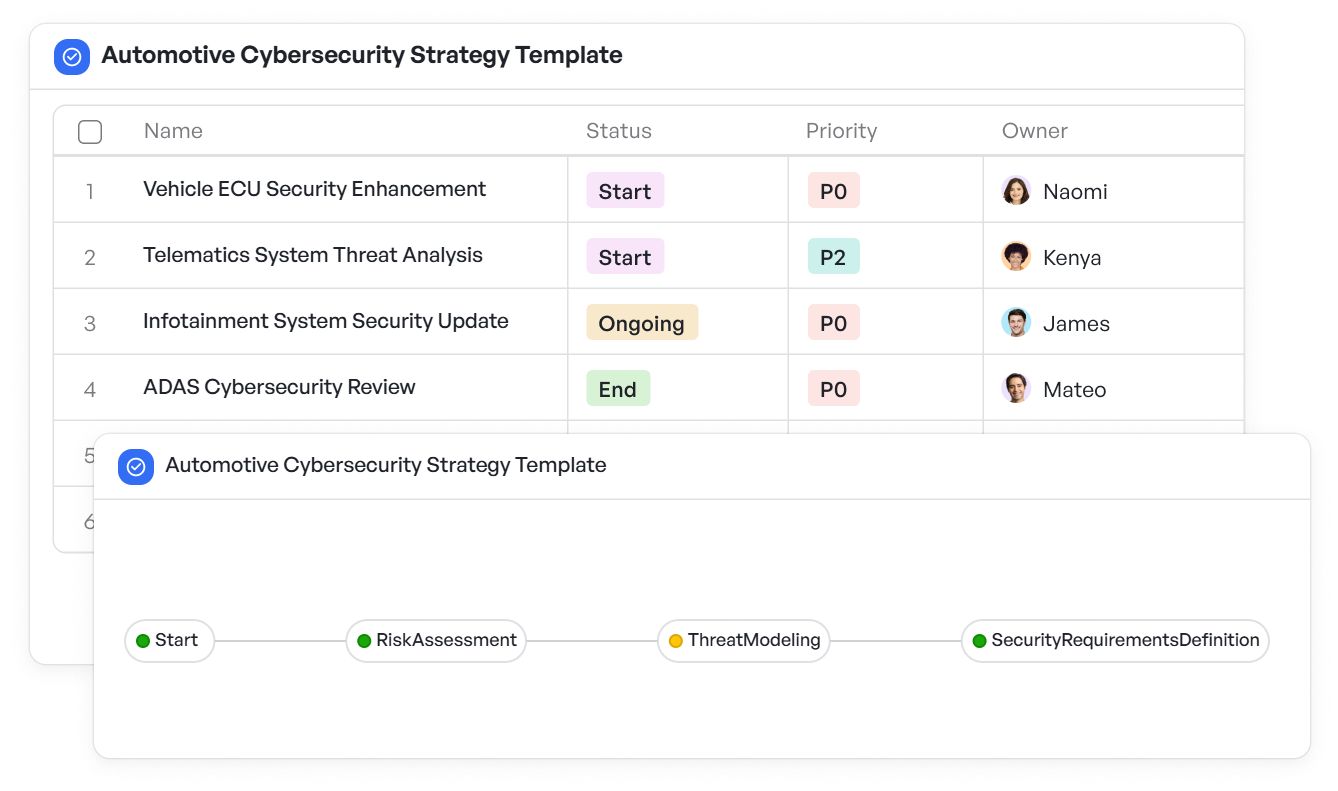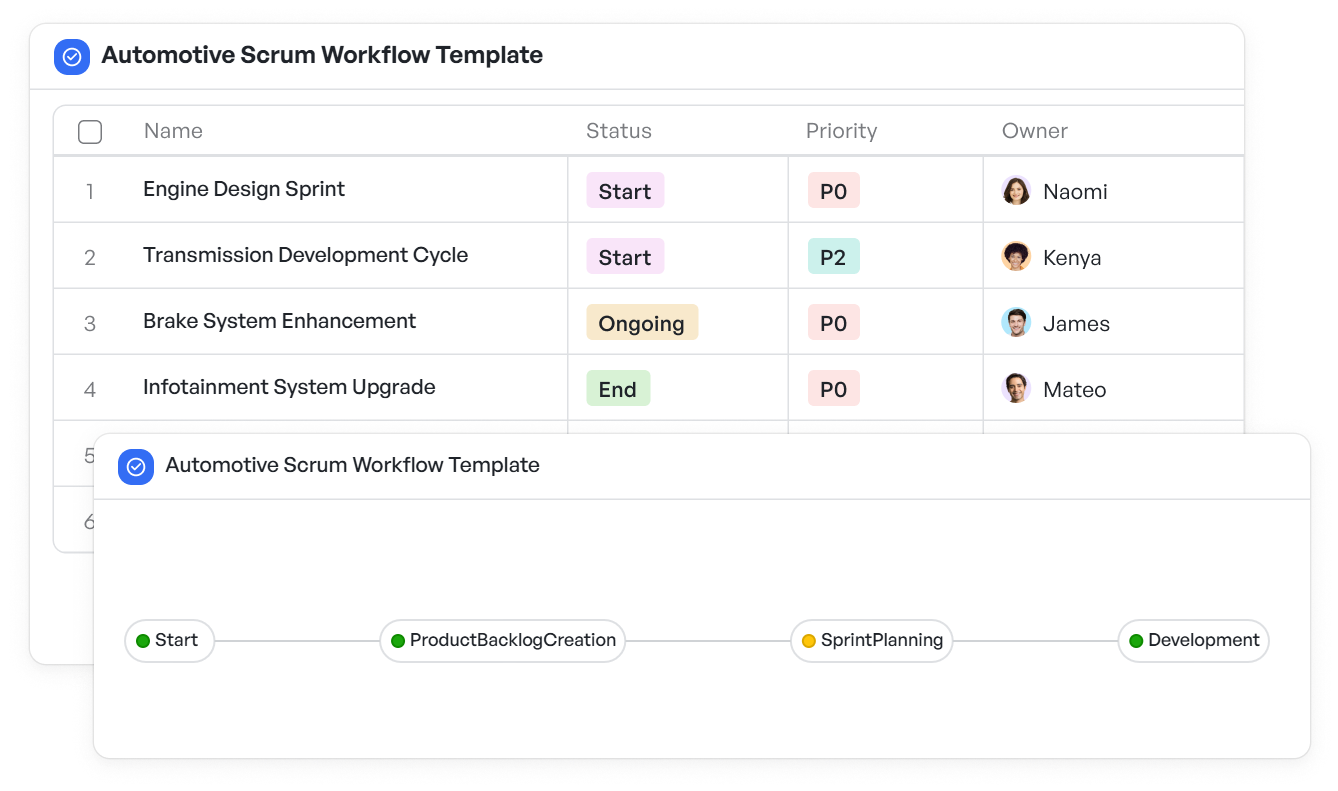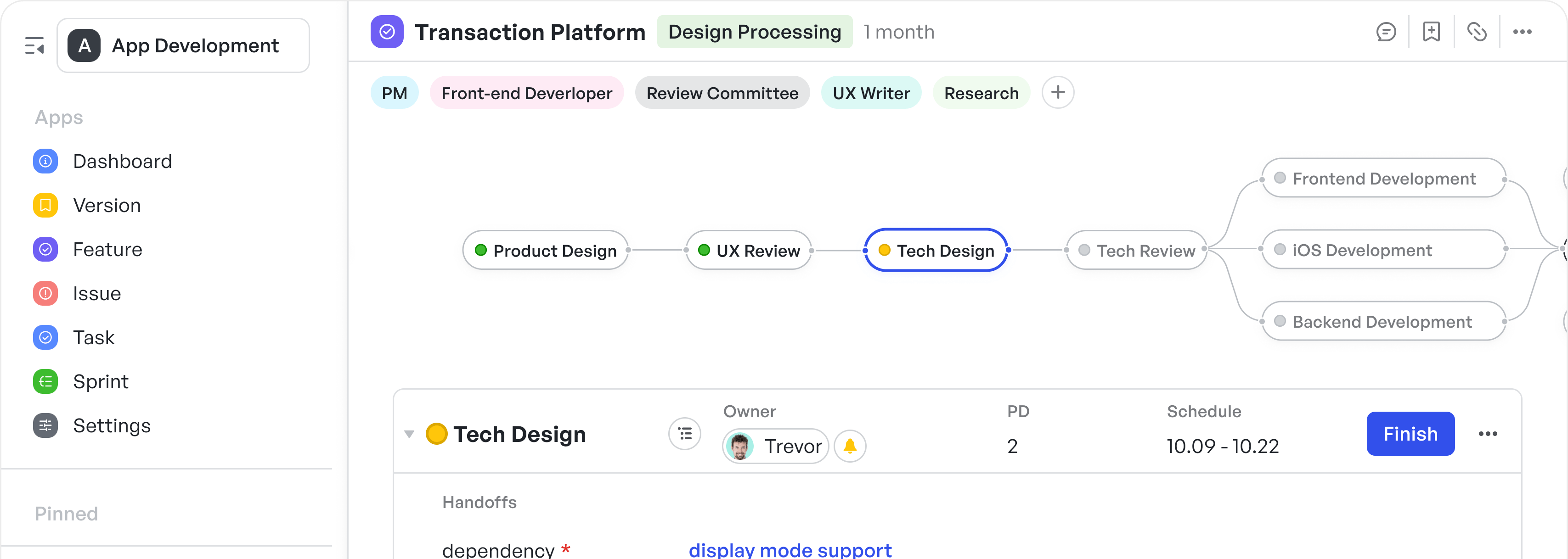How to Implement Test-Driven Development in Automotive: Enhancing Software Reliability and Streamlining Production

As modern vehicles evolve into software-driven machines, automotive companies increasingly depend on reliable code to power everything from autonomous driving and advanced driver assistance systems (ADAS) to infotainment and EV systems. In such a high-stakes environment, even minor software bugs can compromise safety, performance, or user experience.
Test-driven development (TDD) offers a proven approach to building high-quality, maintainable, and secure software. By writing tests before code, engineering teams can catch issues early, reduce failures, and streamline development cycles.
In this article, you’ll learn how test-driven development applies to the automotive sector, the tangible benefits it delivers across various vehicle systems, and how visual workflows enhance cross-team collaboration and project visibility.
What is Test-Driven Development in Automotive?
Test-driven development in automotive refers to a software development methodology where engineers write automated tests before implementing the actual code for vehicle systems, from basic electronic control units to advanced autonomous driving features.
This approach is critical in automotive because vehicles are safety-critical systems where software failures can have life-threatening consequences. Engineers first define expected behaviors through comprehensive test cases that verify everything from anti-lock braking system responses to sensor fusion algorithms in self-driving cars, then build the software to meet those specifications.
For example, when developing adaptive cruise control, test-driven development ensures that the system correctly maintains safe following distances, responds appropriately to sudden braking by the vehicle ahead, and gracefully handles sensor failures before the feature is deployed in actual vehicles.
The automotive industry's adoption of test-driven development has become increasingly important as vehicles transform into sophisticated computers on wheels, with modern cars containing over 100 million lines of code across hundreds of electronic control units.
Companies like Tesla and BMW use test-driven development to manage the complexity of integrating multiple systems while maintaining safety standards required by regulatory bodies like the National Highway Traffic Safety Administration.
- This methodology helps automotive manufacturers reduce costly recalls, accelerate development cycles for new features, and ensure that over-the-air software updates don't introduce new safety risks.
- The approach also supports compliance with automotive safety standards such as ISO 26262, which requires systematic verification and validation of safety-critical software throughout the development lifecycle.
Furthermore, test-driven development enables automotive companies to innovate rapidly in emerging areas like electric vehicle battery management systems and autonomous driving capabilities while maintaining the reliability consumers expect.
As vehicles become more connected and automated, test-driven development provides the foundation for managing software complexity while ensuring that new technologies enhance rather than compromise vehicle safety and performance.
You may be interested in: 👉Extreme Programming Vs. Test-Driven Development
5 Reasons Why Test-Driven Development in Automotive is Crucial
The automotive industry faces unique challenges, particularly when it comes to the development of in-vehicle software. For example, autonomous driving systems need to be highly reliable, as any software failures could result in dangerous accidents.
Test-driven development offers a structured approach to software development that helps automotive companies manage risks and create safe, reliable software.
Here’s why test-driven development is especially beneficial for automotive software development:
1. Increased Reliability and Safety
In critical automotive systems like ADAS and autonomous driving, reliability is paramount. A single bug or system failure can have disastrous consequences.
Test-driven development ensures that each part of the software is tested and validated before it’s deployed, which drastically reduces the chances of bugs slipping through the cracks.
2. Early Detection of Errors
By writing tests before the code, test-driven development makes it easier to spot and fix errors early in the development process. This is crucial for automotive software, where the complexity of systems can make it difficult to identify issues in late-stage development.
Early bug detection leads to smoother testing and integration phases, ultimately saving time and reducing costs.
3. Continuous Improvement
Test-driven development encourages developers to continuously improve the quality of the software. In automotive systems, this is especially important as technology evolves rapidly.
Test-driven development promotes incremental improvements and ensures that new features and updates are rigorously tested before they’re integrated into the larger system.
4. Enhanced Documentation
Since tests describe the functionality of the software, they essentially serve as living documentation. In the automotive sector, where compliance with regulations and standards is critical, test-driven development provides clear documentation that can be reviewed for auditing and compliance purposes.
5. Faster Development Cycles
Although test-driven development may seem time-consuming initially, it often leads to faster development in the long run.
By ensuring that code is always tested and ready for deployment, automotive developers can streamline the integration process, reduce rework, and meet deadlines more effectively.
Applying Test-Driven Development in Automotive Software Development
Automotive software development covers a wide range of applications from infotainment systems to safety-critical systems like braking or steering control. Each of these areas can benefit from test-driven development in unique ways.
Here’s a closer look at how test-driven development can be applied across different automotive domains:
Autonomous Vehicles
For autonomous vehicles, the software is the backbone of the car's decision-making process. Every component—from automotive vehicle sensors to path planning—needs to be meticulously tested.
Test-driven development helps ensure that all these systems work together reliably, reducing the risk of failure in live traffic environments.
For example,
- Waymo extensively uses test-driven development for their self-driving car software, writing comprehensive tests that simulate millions of driving scenarios before deploying code updates to their fleet.
- Tesla employs similar practices for their Autopilot system, using test-driven development to verify that their neural networks correctly interpret sensor data and make safe driving decisions across diverse road conditions.
- General Motors' Cruise division also implements test-driven development methodologies to ensure their autonomous vehicle software handles edge cases like construction zones and emergency vehicle detection before real-world testing begins.
In-Vehicle Infotainment Systems
Infotainment systems are no longer just for entertainment; they integrate with navigation, safety features, and communication systems.
Test-driven development ensures that updates to these systems are smooth, safe, and free from bugs that could disrupt the user experience or affect safety-critical functions.
For example,
- BMW uses test-driven development for their iDrive infotainment platform, ensuring that software updates don't interfere with critical vehicle functions while maintaining seamless user experiences.
- Ford applies test-driven development practices to their SYNC system, particularly when integrating new smartphone connectivity features with existing safety systems like emergency calling.
- Mercedes-Benz employs this methodology for their MBUX system to verify that voice recognition and touch controls work reliably without creating driver distraction or affecting vehicle performance.
Electric Vehicle (EV) Systems
For EV manufacturers, software plays a crucial role in managing energy efficiency, battery life, and vehicle-to-grid communication. Test-driven development ensures these complex systems remain reliable and efficient by testing new software features before deployment.
For teams developing software in EV systems, aligning with a structured automotive electric vehicle strategy ensures that testing aligns with long-term product goals and interoperability.
For example,
- Tesla is perhaps the most prominent example, using test-driven development for their battery management systems and over-the-air update capabilities, ensuring that software changes optimize charging efficiency without compromising battery safety.
- Rivian implements test-driven development for their vehicle-to-grid communication systems, testing how their electric trucks interact with power grids before deploying features to customers.
- BYD, the Chinese EV manufacturer, uses test-driven development practices to validate their battery thermal management software and energy optimization algorithms across their diverse electric vehicle lineup.
 Plan and align EV development phases and strategic goals
Plan and align EV development phases and strategic goalsVehicle-to-Everything (V2X) Communication
As vehicles become more connected, they will need to communicate with infrastructure, other vehicles, and the cloud. Test-driven development ensures that these systems function reliably, enabling safe, real-time data exchange for traffic management, navigation, and safety.
V2X relies on secure, real-time communication. Integrating an automotive cybersecurity strategy template into test-driven development ensures that every communication module has defined security test cases.
For example,
- General Motors employs test-driven development for their V2V safety systems that enable vehicles to share information about sudden braking, lane changes, and hazardous conditions with nearby cars. Their test suites simulate complex multi-vehicle scenarios to ensure that emergency brake warnings and collision alerts are transmitted and received within the critical 100-millisecond timeframe required for effective safety intervention.
- Audi has implemented test-driven development for their Traffic Light Information system, which allows vehicles to communicate with traffic signals in select cities. Their engineers write tests that verify the system correctly receives and processes traffic light timing data, ensuring drivers get accurate countdown information without system delays that could cause confusion or unsafe driving behavior.
- Tesla extensively uses test-driven development for their over-the-air update system and fleet data communication, writing security-focused tests that verify encrypted data transmission and prevent unauthorized access to vehicle systems.
 Outlines V2X security guidelines and data protection protocols
Outlines V2X security guidelines and data protection protocolsThe Role of Visualized Workflows in Test-Driven Development in Automotive
Test-driven development can be complex, and managing multiple tests, developers, and stages of development can overwhelm teams. This is where visualized workflows come into play.
By utilizing tools that visualize workflows, automotive companies can:
- Track Progress: Visual workflows make it easy to see which tests are completed, which ones are pending, and where bottlenecks are occurring. This transparency helps teams stay aligned and keep projects on track.
- Improve Collaboration: Visual workflows foster communication among cross-functional teams—development, quality assurance, and operations—ensuring everyone has visibility into the project’s status and can respond quickly to changes.
- Simplify Task Management: When working on complex automotive projects, such as updating an ADAS feature, it’s easy for tasks to become disorganized. Visual workflows allow teams to break down tasks into manageable components, assign responsibilities, and set deadlines, making the development process smoother and more efficient.
- Ensure Consistency: By standardizing workflows, teams can ensure that best practices are followed, reducing variability and the risk of mistakes.
Test-driven development fits naturally into a scrum workflow because both emphasize iteration, continuous feedback, and incremental progress. Using an automotive scrum workflow template helps teams visualize test sprints, track test coverage, and maintain transparency across collaborative testing efforts.
 Organizes development sprints and testing stages for software teams
Organizes development sprints and testing stages for software teamsDrive Excellence With Test-Driven Development in Automotive Software
Test-driven development in automotive ensures safer, high-quality vehicle software—whether for infotainment, autonomous systems, or EV features.
Combined with visualized workflows, it boosts collaboration, shortens development cycles, and improves reliability across all systems.
Streamline your automotive software development with Meegle’s visual workflow platform.
Build your workflow today!
The world’s #1 visualized project management tool
Powered by the next gen visual workflow engineRead More
Check All BlogsStart creating impactful work today



